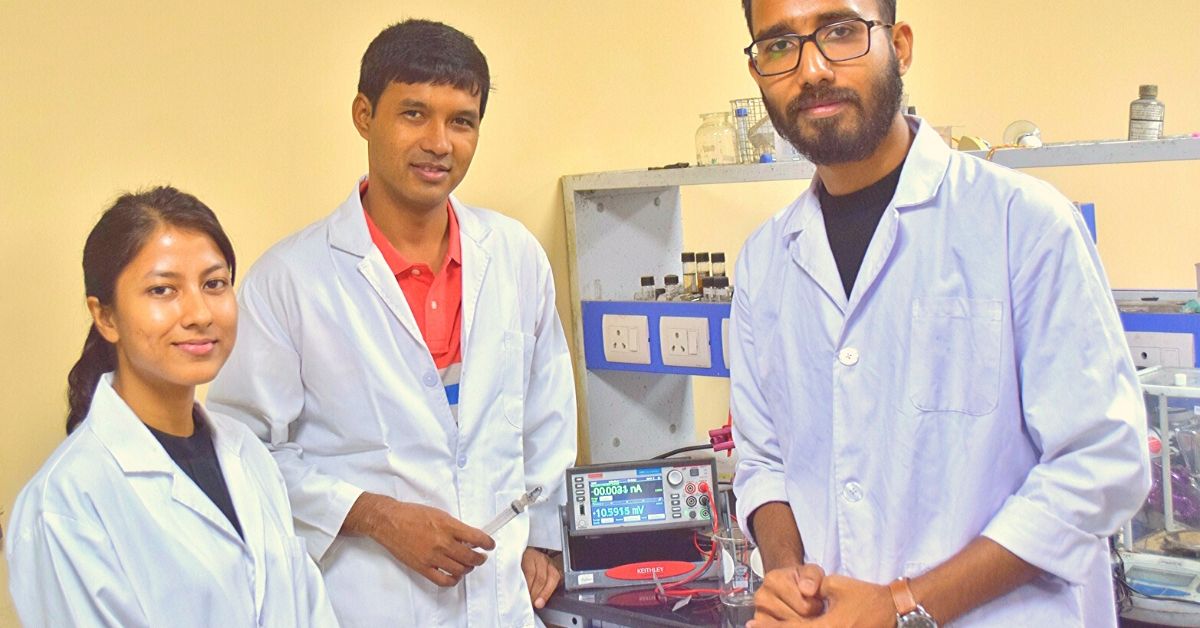IIT-G Says The Water From Your Tap Can Generate Electricity. Here’s How
So far, they have generated enough electricity to light-up LED table lamps and calculators.

Imagine harvesting electricity from water flowing through an ordinary household tap? Researchers at IIT-Guwahati led by Dr Kalyan Raidongia from the Department of Chemistry have developed materials that can produce energy from water at household level.
These new ways of producing energy can be employed in household environments to support decentralisation of energy sources. Usually, one large power plant produces energy for an entire region. In contrast, the team is working on a model based on a large number of small generation devices that can be employed to generate energy in every household.
The excess energy produced in households can be transported to nearby areas where there is an excessive need for energy. So far, they have generated enough electricity to light-up low-power LED table lamps, electronic humidity meters, and calculators.
Researchers at IIT Guwahati employed the nanoscale phenomenon called “electrokinetic streaming potential” to harvest energy from flowing water on small length scale like water flowing through household water taps.

How does it work?
“The name of the process is called electrokinetic streaming potential. According to this effect, when an electrolyte is pushed through a nanochannel (or porous plug) with charged walls it generates an electric current (or potential). It was predicted theoretically in 1965, by two scientists from the Royal College of Advanced Technology in the United Kingdom,” says Dr Raidongia, speaking to The Better India.
“Unfortunately, the power generated in this process is very humble, typically in the range of a few microwatts. This is because there is always a trade-off between high flow-rate and nanofluidic confinement. The persistent and systematic efforts of researchers across disciplines hardly achieve power output values beyond the microwatt range. However, we have demonstrated that power output can be improved up to milliwatt range by attaining the best out of these parameters (high flow-rate and nanofluidic confinement) through biconical nanofluidic channels that interconnect tetrahedral and octahedral voids in the close-packed silica sphere,” he adds, while explaining the fine science behind it.
Going beyond the fine science, here is how it works.
In the first step, researchers connect an aspirator pump to the water tape to generate a vacuum pressure. The aspirator pump is a simple glass apparatus, which produces vacuum pressure when fluids (liquid or gaseous) flows through it. They use that vacuum pressure to pull water through the device (made-up of close-packed silica spheres) to generate electricity.
Dr. Raidongia explains that this endeavour is not meant to replace the existing electricity received through conventional means, but supplement it. Researchers, meanwhile, have also found ways of generating electricity using stagnant water as well. To extract power from stagnant water, devices were fabricated by employing doped graphene flakes.
“What we have done is modify graphene in such a way that its electron density is manipulated; even stagnant water in contact with this form of graphene can produce energy. We doped graphene oxide with boron and nitrogen, separately, loaded the two forms of graphene into two filter papers that served as electrodes in an electrochemical cell. Dipping the two filter papers into water produces potential up to 570 millivolt, which was stable for a few days (80 hours),” he said, describing the process.
We use a lot of stagnant and flowing water in our daily lives. Water stored in buckets and water flowing from taps can potentially be used to produce energy if such nanogenerators can be developed further.
While the power generated currently is too small for practical applications, research such as those by Dr. Raidongia’s team brings us a step closer to realising simple, safe and reliable alternative power sources that can eventually reduce the load on the centralised grid, and contribute to energy self-sufficiency.
Also Read: Learning Never Stops: At 77, This Retd. Engineer is One of IIT Delhi’s Oldest PhDs
(Edited by Saiqua Sultan)
Like this story? Or have something to share? Write to us: [email protected], or connect with us on Facebook and Twitter.
If you found our stories insightful, informative, or even just enjoyable, we invite you to consider making a voluntary payment to support the work we do at The Better India. Your contribution helps us continue producing quality content that educates, inspires, and drives positive change.
Choose one of the payment options below for your contribution-
By paying for the stories you value, you directly contribute to sustaining our efforts focused on making a difference in the world. Together, let’s ensure that impactful stories continue to be told and shared, enriching lives and communities alike.
Thank you for your support. Here are some frequently asked questions you might find helpful to know why you are contributing?


This story made me
-
97
-
121
-
89
-
167











